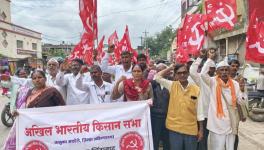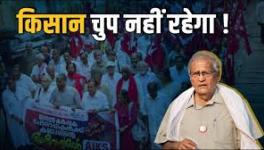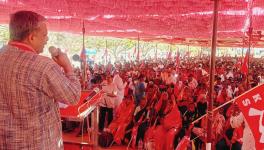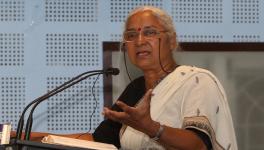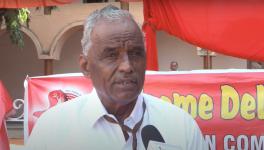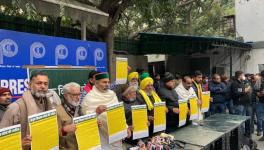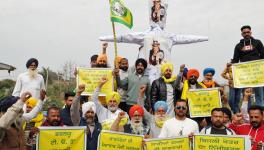Farmers Remember Two Peasant Leaders – And Resolve to Fight on
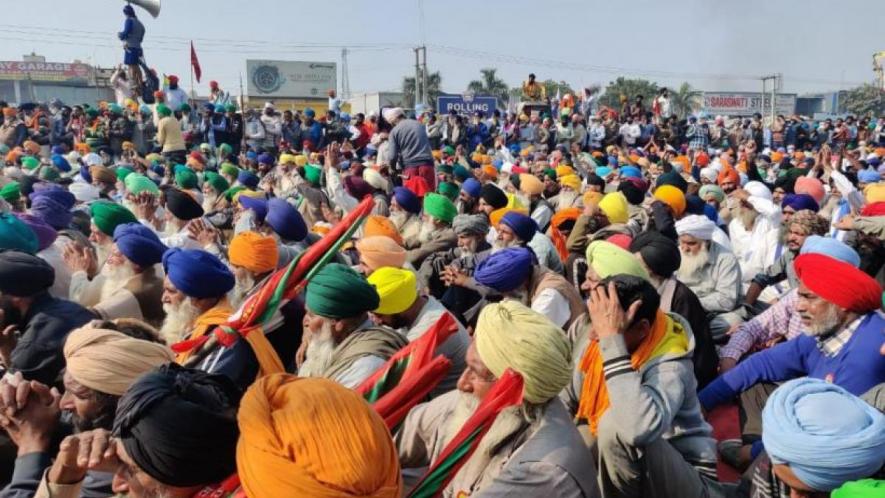
File photo.
It was a day when events and personalities of a century ago seemed to come alive and, yet again, inspire farmers across Punjab, Haryana and other parts of India. As part of the ongoing farmers’ struggle against the three farm laws, February 23 was marked as “Pagdi Sambhal Diwas” which roughly translates as “Guard your Turban Day”.
Dozens of meetings were held in Punjab, Haryana and elsewhere to mark the Pagdi Sambhal Diwas, including special observance at Delhi’s border protest sites. In Haryana, big gatherings took place at Ratia (Fatehabad), Sirsa, Chuli Bagdiyan village (Hisar), Khatkar toll plaza on Jind-Patiala highway, Badhowal toll plaza on Hisar-Chandigarh highway in Kaithal district and Kitlana toll plaza on Mahendragarh-Bhiwani highway, according to media reports.
At Singhu border, members of Bhagat Singh’s family were present on the dais and recalled the days of the struggle against the British. Ajit Singh was Bhagat Singh’s uncle. In Punjab, thousands participated in meetings in Sangrur, Patiala, Barnala, Bathinda, Ferozepur, and other districts, with both men and women in colourful headgear. There are reports of similar meetings of farmers from different states including Maharashtra, Bihar and Uttar Pradesh.
The day itself – February 23 - was the 140th birth anniversary of Sardar (or Chacha) Ajit Singh who led a massive peasant movement against the British in 1907. In an ironic twist of history, that movement, too, was against three laws that the British had brought in.
The day was also for remembering another revolutionary peasant leader, Swami Sahajanand Saraswati, who organised the peasantry and agricultural labourers in Bihar from the 1920s onwards, leading powerful movements and forming the Kisan Sabha (farmers’ union) which became the All India Kisan Sabha (AIKS) in 1936 and continues to be the biggest farmers’ organisation in the country.
The lives and thoughts of both these peasant leaders – recounted in these innumerable meetings, still continue to be relevant, indeed a source of both inspiration as well as learning.
Ajit Singh: A Mesmerising Orator and Fighter
The already brutally exploited peasantry in Punjab was infuriated by the three laws brought in by the British that threatened land seizure and increased water rates. Between March and May 1907, 33 large meetings of farmers were held in Punjab protesting against the laws. It was in one of these meetings that Lala Banke Dayal recited his poem ‘Pagdi Sambhal Jatta’ which became the war cry of the peasants.
Also read: Farm Laws: With Harvesting Season Here, Focus Shifts on Youth, Workers to Keep Delhi Morchas Running
Nineteen of these meetings were addressed by Ajit Singh who was a “powerful orator who used to hold the audience spellbound”, as the chronicler of Bhagat Singh’s life and thoughts, Professor Chaman Lal writes. The colonial government branded one of his speeches as ‘seditious’ and charged him under section 124-A of the Indian Penal Code, the same provision being used today so freely by the Modi government.
The assessment of the British was that the movement was turning against British rule itself and so they decided to withdraw the three laws in May 1907. After this retreat, they arrested Lala Lajpat Rai and Ajit Singh, and deported them to Mandalay prison (in current day Myanmar). They were released a few months later. But Ajit Singh was forced into exile and spent the next 40 years in all parts of the world, chased by various governments as he tried to organise Indian revolutionaries.
Interim Prime Minister Nehru arranged his release from a German prison in 1946 and brought him back. His health was deteriorating and he passed away at 3.30 AM on August 15, 1947. It was just a few hours since India had gained Independence, but Ajit Singh breathed his last in free India.
The parallels with the present farmers’ struggle are striking. There were three laws, then and now. The governments proposed changes in the law to assuage the fighting peasants, then and now. The farmers insisted that only scrapping of laws would be acceptable, then and now. In 1907, the peasants won – the British had to retreat. And in the meetings held on Pagri Sambhal Diwas, this was reiterated to resounding cheers and slogans – they would not bow down till the current black laws are repealed.
Swami Sahajanand Saraswati: The Revolutionary Ascetic
While Ajit Singh was leading the Punjab peasants, another great revolutionary was evolving in Bihar. Born in Ghazipur, Uttar Pradesh, Sahajanand Saraswati became a monk in Kashi as a young man. He jumped into the freedom struggle, actively moving around villages in Bihar mobilising people for the Non-cooperation Movement . It was in the course of these intense days and nights that he realised that the dire condition of the peasants and landless labourers was as much a result of the inhuman exploitation by landlords as of British rule, and that real liberation meant dislodging both, who were allies.
He started organising the peasants and in 1928, became the president of Bihar Provincial Kisan Sabha at its conference in Sonepur. He started raising the issues of peasants in Congress meetings and in 1936, alongside the Lucknow session of the Congress, the first conference of the All India Kisan Sabha was held where he was elected president.
Also see: Churu Mahapanchayat: Farmers Will Fight Till Last Breath
He led huge struggles against eviction of peasants, against back-breaking taxes and against high indebtedness that marked the common peasant’s lot. He took special care to mobilise the so called backward and other “lowliest” of castes for he saw that they were the most exploited.
Besides mobilising peasants and landless labourers, Swami Sahajananda studied prodigiously and wrote several political and ideological books in very simple Hindi so that common people could understand everything. His standing among people was legendary and thousands flocked to his meetings and participated in movements at his call. His books were widely read and propagated.
It was Sahajananda who gave the slogans – “Kaise loge maalguzari, lathh hamara zindabad (how will you take taxes, our stick will be victorious)” and the even more radical, “Those who produce food grain and cloth, they only will make laws; This India is theirs, they only will rule”.
Also read: Kisan Sabha Presents Model Bill on MSP, Offers 50% Margin over Cost
His slogans are in the hearts of millions of farmers today when they demand that the current laws be scrapped and the new draft proposed by Kisan Sabha be passed as a new law.
The two peasant leaders, Ajit Singh and Swami Sahajanand, have become inspirational symbols again, just as they were a century ago. It is tragic that back then, they were fighting against colonial rulers but today, the fight is against a duly elected government that claims to be ‘nationalistic’. The lesson is not hidden from the farmers.
Get the latest reports & analysis with people's perspective on Protests, movements & deep analytical videos, discussions of the current affairs in your Telegram app. Subscribe to NewsClick's Telegram channel & get Real-Time updates on stories, as they get published on our website.









